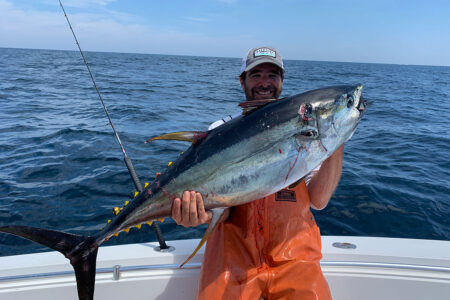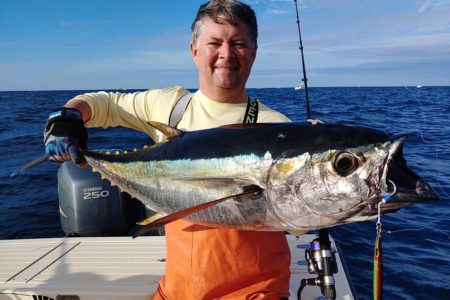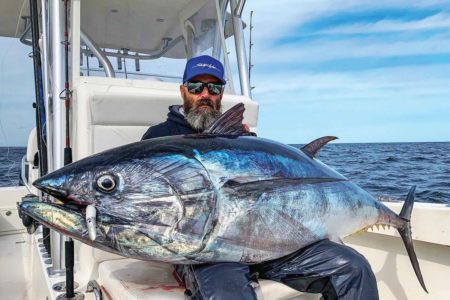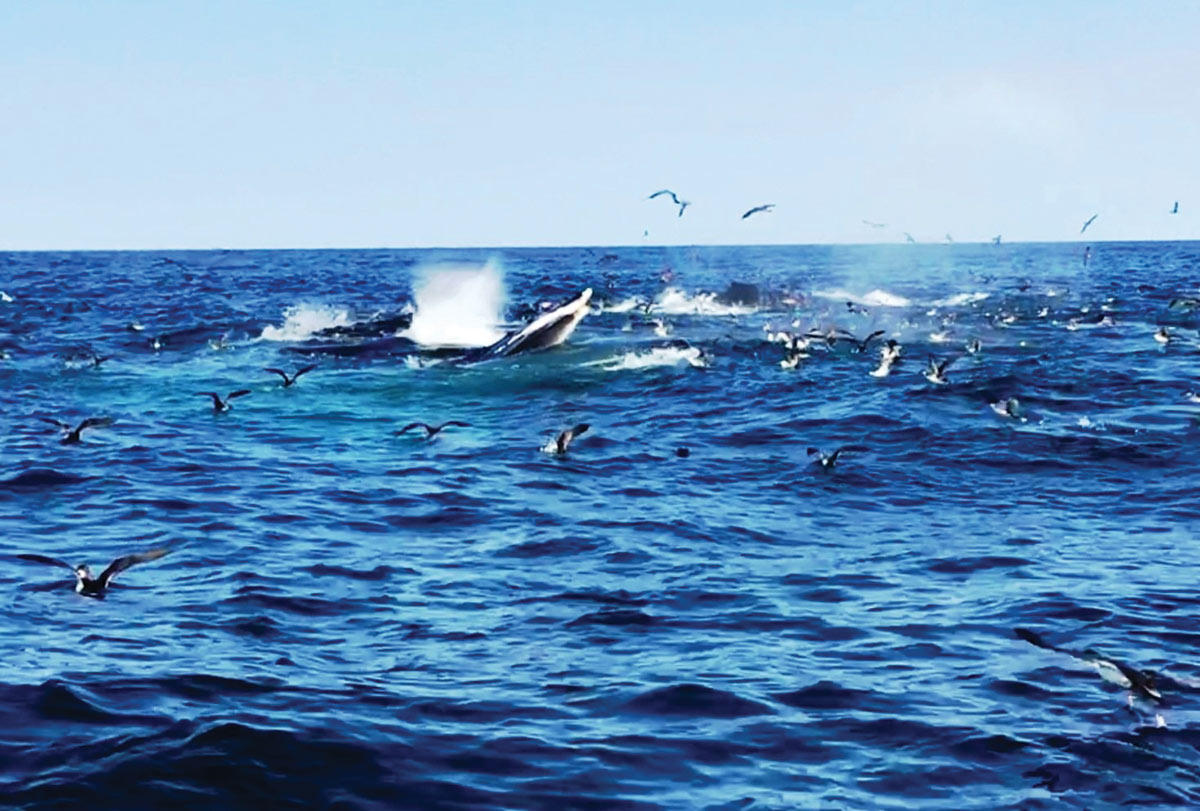
There is a somewhat predictable progression to the Northeast’s near offshore and canyon fishing season, with September and October typically signaling the final stages of a multipart action game. Let’s take a closer look at this transition and where/when to plan your final trips to leverage what can be an extremely productive time of the year.
Game Changers
There are a few weather and seasonal related factors that will influence your planning process when it comes to the fall offshore fishing season. The first of these is seasonal with the autumnal equinox occurring the third week of September. Not only is this the official first day of fall, it is also the moment in time where the amount of daylight is equal to the night, hence the Latin term word equinox to describe this event that occurs twice per year. After this date (September 22, 9:54 P.M. EDT, according to the Farmer’s Almanac), the days are getting shorter and the nights are getting longer, until we get to the winter solstice (the longest night) that happens sometime in the third week of December. The impact of all this to anglers who ply their trade in the near offshore and canyon world are that you will probably leave in the dark, come back in the dark and cherish every hour of daylight that you can muster in this changing environment.
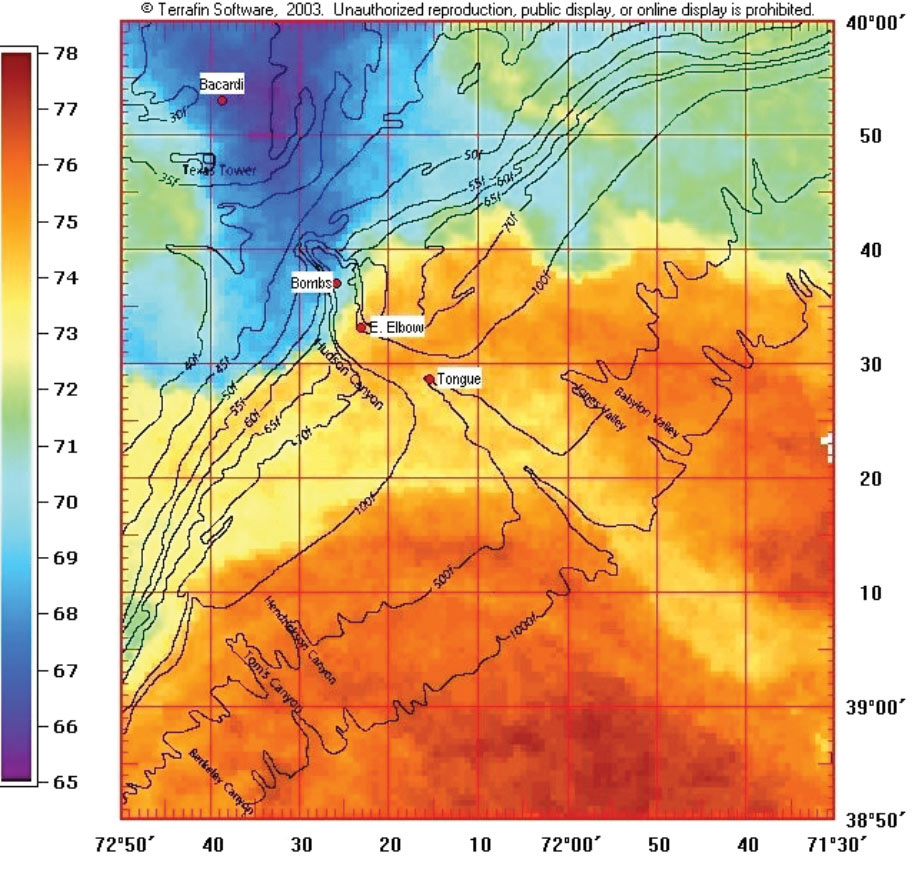
The weather part of the equation will play a larger role in determining when and where you will be able to fish offshore. As planet earth tilts on its axis for the fall transition, the prevailing winds seem to shift with it, changing from a more southerly summertime flow to one with a definite northern slant. The fall weather is further influenced by the incessant procession of “alphabet” storms that are so-named by NOAA (for the 2018 season, the storm names are Alberto, Beryl, Chris, Debbie, etc.) and will parade up the Northeast Coast almost weekly from September through mid-November, generating copious amounts of wind and agitating local coastal and offshore sea conditions. Some of these storms will follow the eastern margin of the Gulfstream current and will be 300 miles out to sea, but they will still influence the ability to get in and out of an inlet during wind-againsttide situations, and having to slug it out for 30 to 100 miles driving into a steady head sea, or when drifting or anchored offshore and just trying to stand up in the cockpit. The storms that follow the closer-to-shore western margins of the ‘stream or that make landfall can shut fishing down for many days at a time, with anglers knowing that the fish are there for the taking, but they just can’t get to them – mother nature’s way of mandatory conservation.
Near Offshore – 15 to 35 Fathoms
Fishing in early September can still be very “tropical” up and down the east coast, with some exotic summertime species still around in good numbers to bend your rods. Water temp is the key ingredient here and as the winds shift to the northern quarters later in the month, this can dramatically impact the comfort zone of many southern pelagics like wahoo, dorado, hammerheads, tiger sharks, duskies and white marlin and send them scurrying after the first good blow. As the weather becomes more unstable with the presence of the alphabet storms, the Gulfstream pinch-off eddies that provide the preferred environment that harbors these pelagic species will start to break up and the fish will head back east/southeast to the main parts of the ‘stream to continue their annual migrations. This is where the science of satellite technology will be your best friend. Getting timely sea temp readings a few days prior to and just before your planned excursions can make all the difference between success and failure when heading offshore. You can visualize both the temperature breaks that attract forage and predators and see which way the good water is flowing to try to intercept it the day of your trip. I have used Terrafin and Roffs in the past, but there are other providers who offer similar data at reasonable annual fees. This timely intel, combined with catch/observation reports that can be gleaned from a variety of sources (tackle shops, internet chat rooms, local charter boat websites, fishing buddies, dragger captains, etc.) should combine to help you zone in to the best places to start your search in these times of waning daylight.
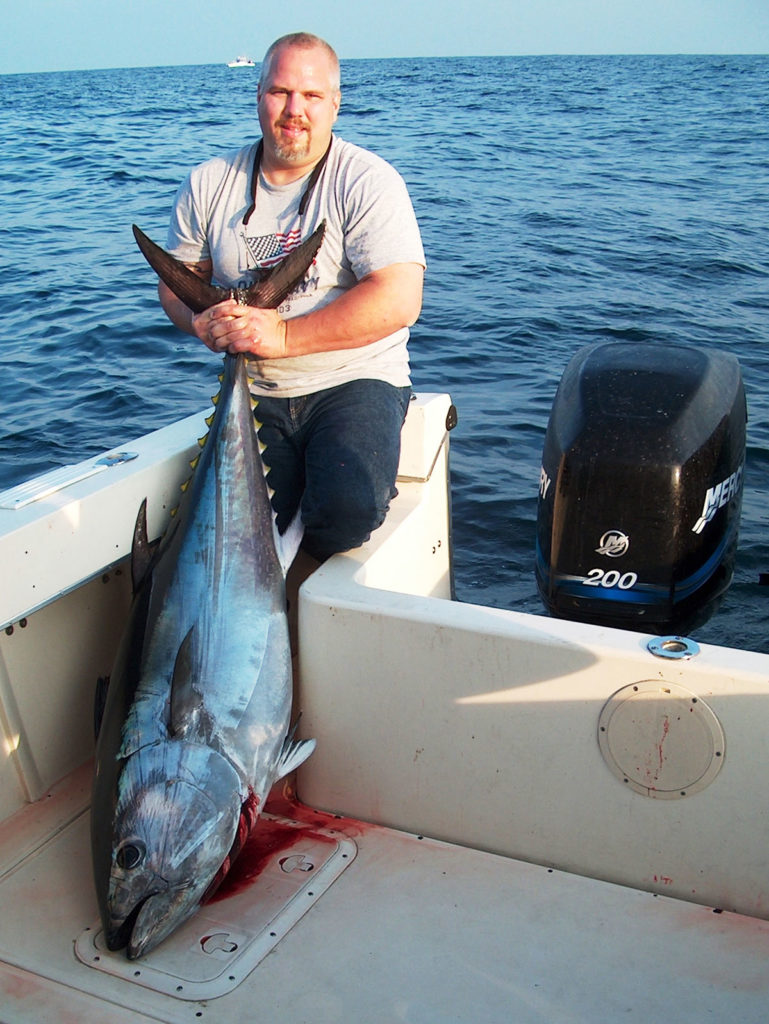
Depending on where you call home port in the Mid-Atlantic or Northeast, inshore species for sharkers should include makos, hammerheads, tigers, duskies, threshers and browns (sand bars). Once the water temps get under 68 degrees, those pesky blue dogs will get back into the mix for the fall migration and some of the other aforementioned shark species will take off when sea surface temps drop below 70 degrees. With my home port being on Long Island’s South Fork, my historical fishing logs indicate that my charter crews have landed some really impressive dorado from mid and late September shark slicks. I always have a pitch bait with a fresh scad mackerel, squid or a live bunker ready to go if and when a 20- or 30-something dorado cruises through the chum slick looking for a freebie. Most of my 300-plus pound mako catches have come from mid-September to the end of October and they all have come from 20-fathom waters, relatively close to shore. Some really large threshers have also been known to return to near offshore waters in September and October, and some of these will push the 600-pound mark. I always recommend to my charter clients that we tag and release these big breeding fish to support the future resource and suggest that you consider doing the same.
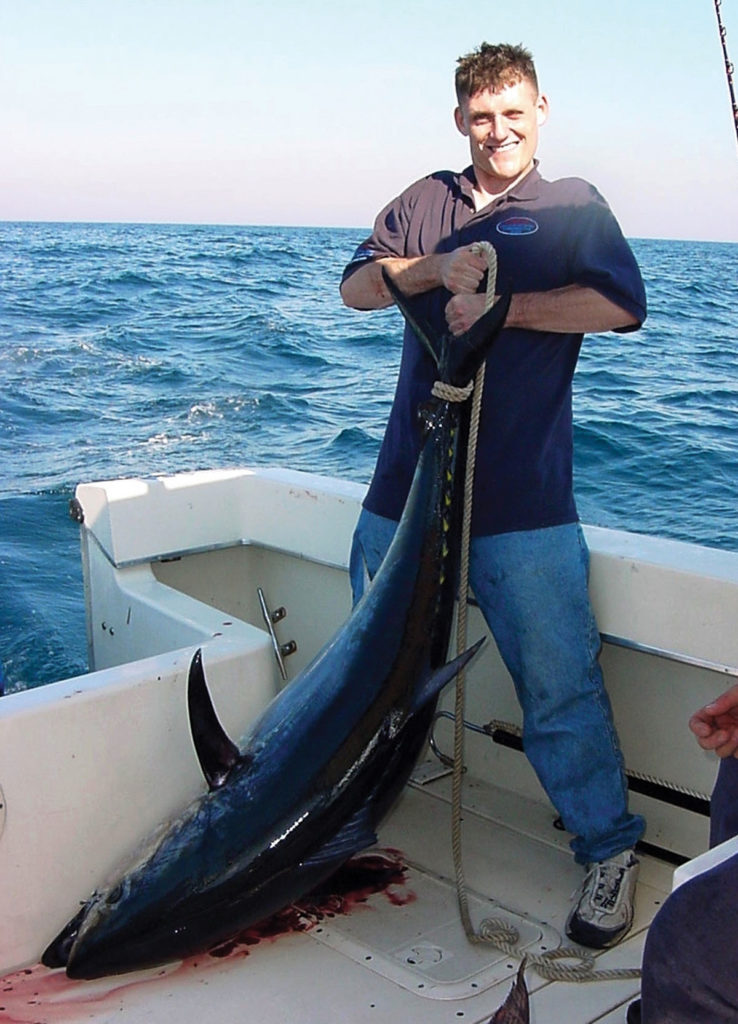
Yellowfin tuna are still a possibility in 35-fathom waters, especially to the south, but they see the sun angle changing and feel the chill in the sea temps. Their internal clocks are telling them that it’s time to head to the next destination in their travel plans and they usually scatter before the end of September. Bluefins are a totally different story. They will stick around some areas until late November or longer, raiding inshore striper and tautog anglers when they least expect it. I usually find the bluefins on the colder side of the sea temp breaks and they will respond to trolling, jigging, casting plugs and chunking, so they are not picky. Near offshore anglers will also find schools of cooperative little tunny (false albacore) and green bonito in 15-to-20 fathom waters (they make great fall shark baits) all the way down to 64 degrees, with skipjacks and any Spanish mackerel typically vacating the area when the sea temps drop below 70. You might find some smaller bluefins mixed in with the footballs, but light tackle is the norm when targeting these members of the tuna tribe.
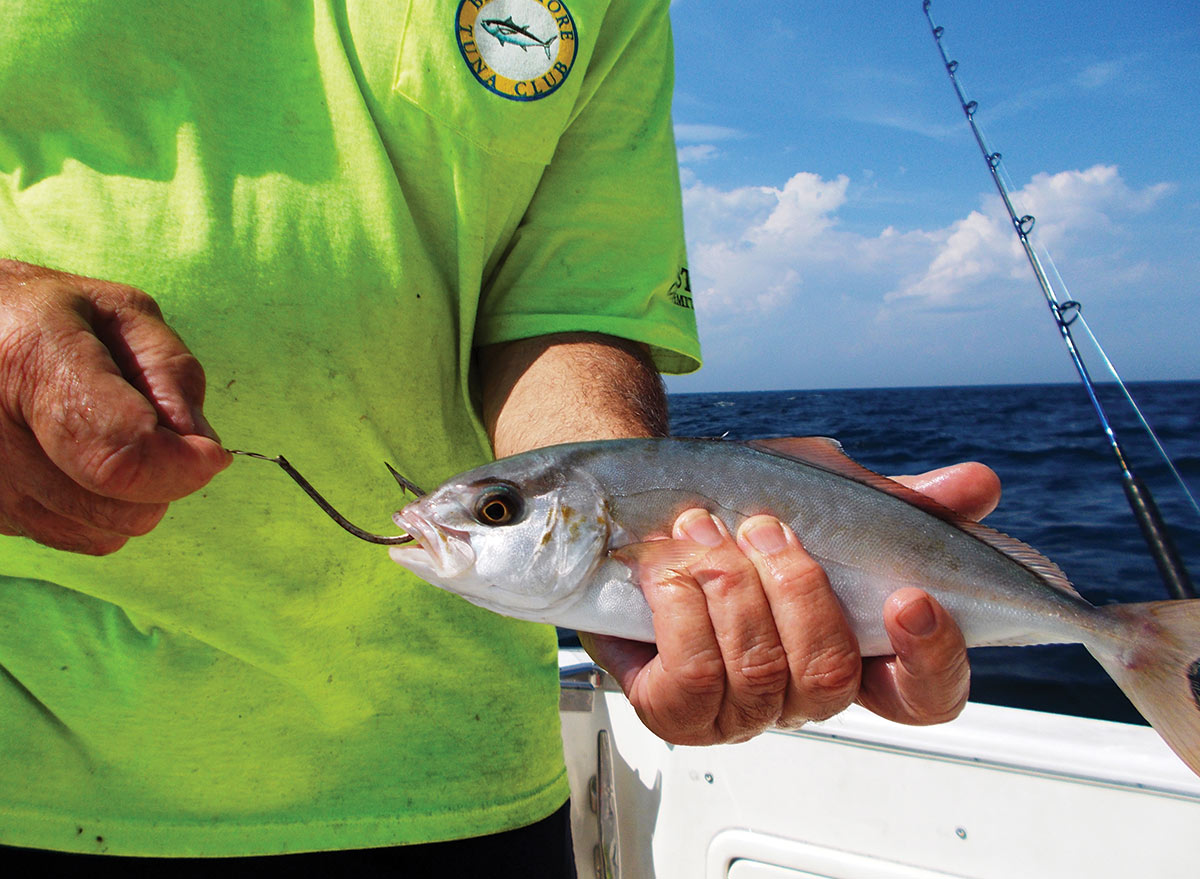
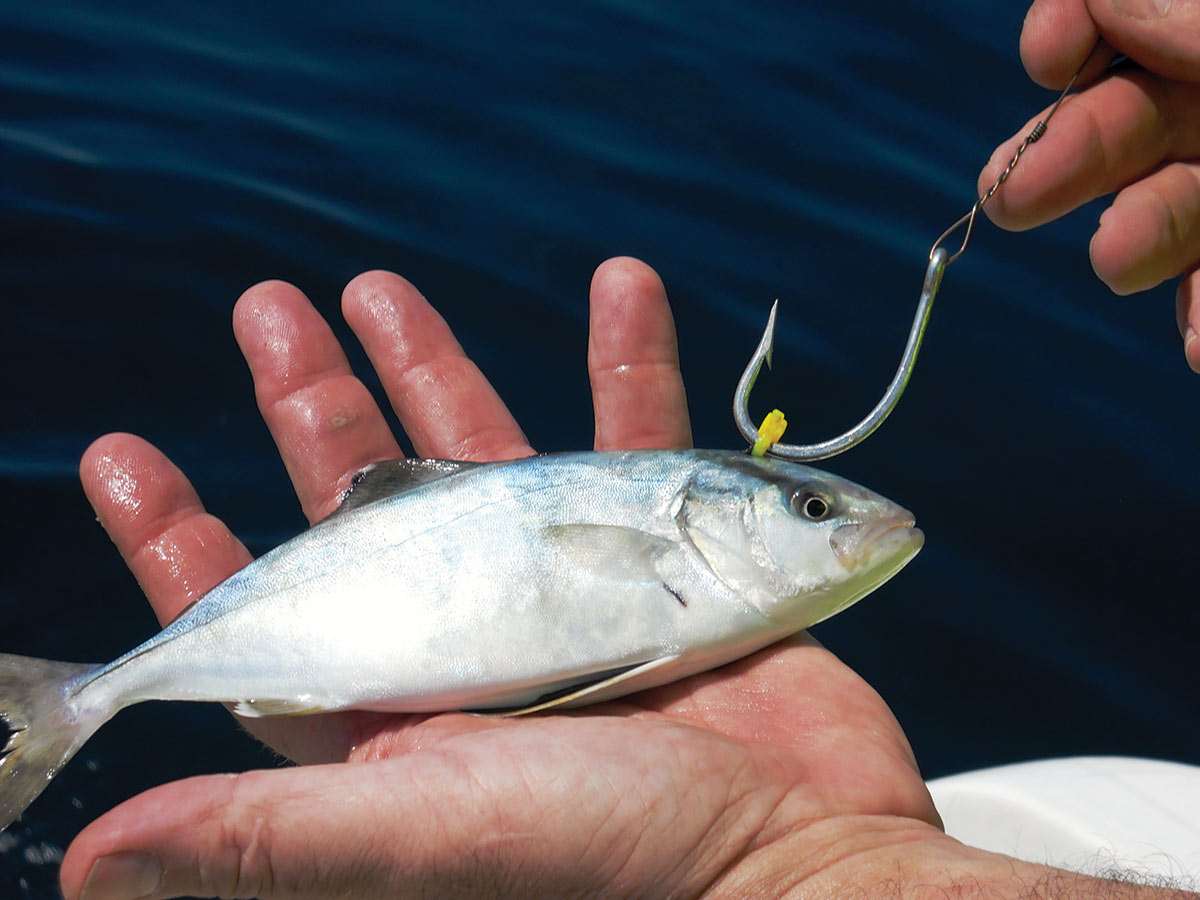
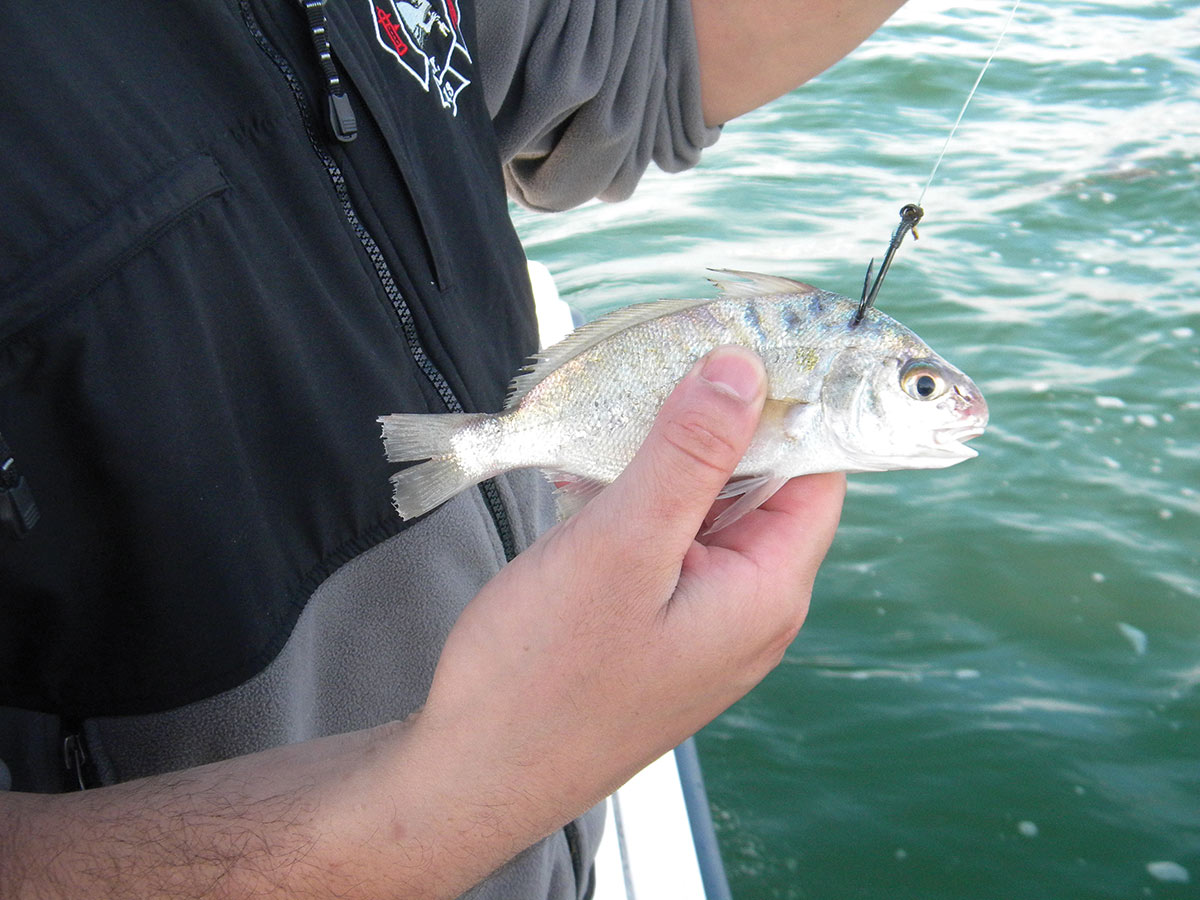
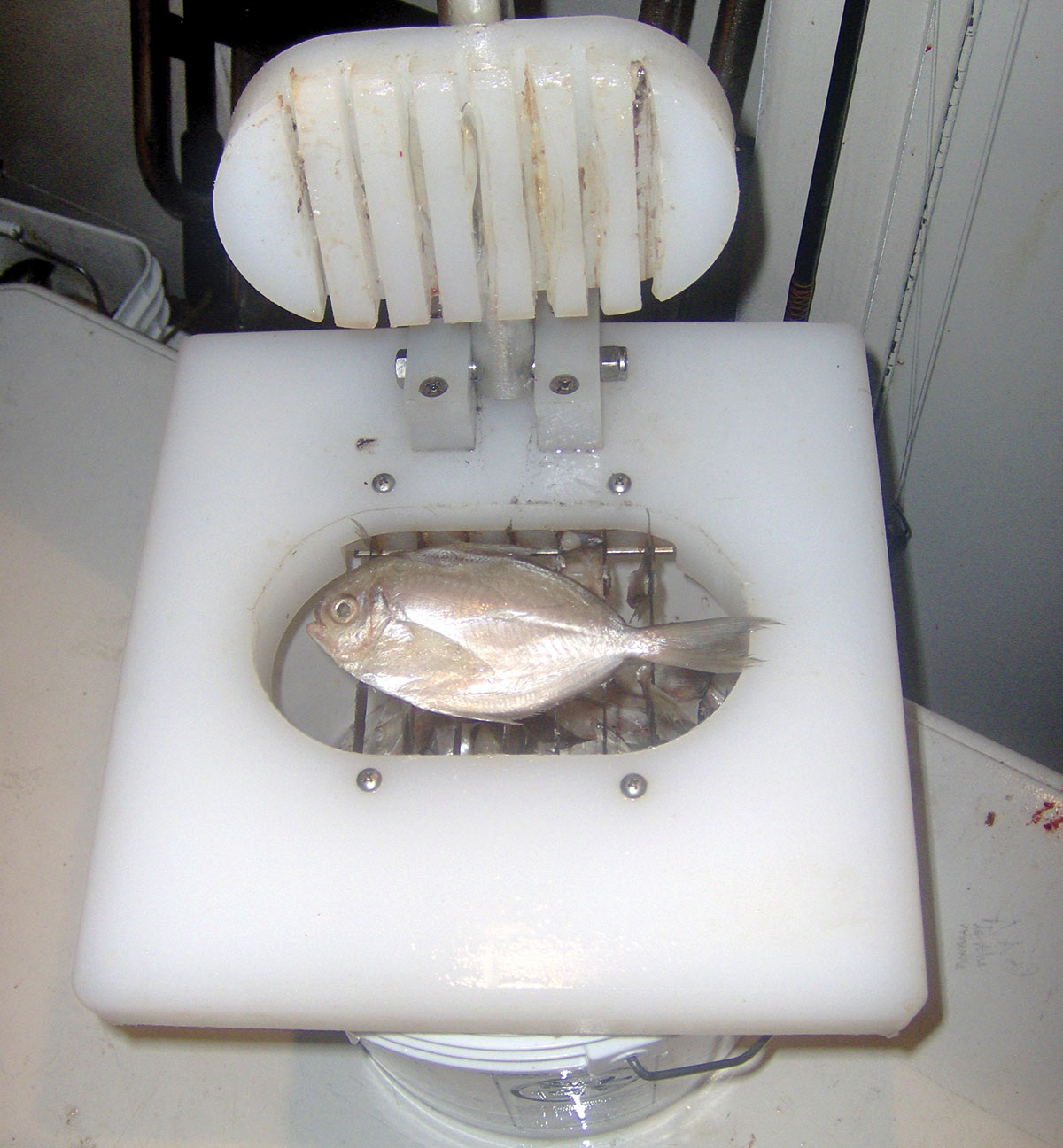
Day Tripping the Edge
Day tripping to the 100-fathom line requires some planning and a definite favorable weather window. In September and October, trolling typically gives way to chunking and the action can be fast and furious at times. The number one key to success here is finding the draggers. This can be done easily via an AIS (automatic identification system) receiver that is plugged into your GPS/chart plotter via a network connection. It’s simple – find the draggers and find the fish. Bluefins and yellowfins will follow these commercial boats relentlessly like a pack of wild African dogs shadowing a wounded gazelle. Why? It’s the proverbial free buffet and plenty of it. Other ways to I/D the big draggers are to employ your radar or to go “old school” and simply look for those big dark shapes on the horizon. Trust me, AIS is a lot easier, since all of these boats are now required to carry a transponder onboard and you will know exactly where they are and not waste any precious daylight trying to find them.
Draggers will convene by the dozens in 50-to-100 fathom waters when scalloping, squidding or dragging the bottom for whatever. They typically shovel their unmarketable catch over the side and when they slow down to pull in their nets, the sound of the chains rattling on the steel or aluminum decks of the commercial vessels brings in the tuna, sharks and swordies from miles around into a small concentrated area where it can be pandemonium at times with dozens of pelagics racing each other to get the free handouts. These are the times when tossing a bunker, squid, mackerel or butterfish bait into the scrum will result in an instant hookup! My best day shadowing the draggers at the 100-fathom line was a mid-October trip where we hooked up with 23 bluefins over 150 pounds and up, bringing nine of these to boatside and taking our two fish limit, releasing the rest. This occurred on the cold side of a 68-to-64 degree temp break. When a buddy called me into a fur ball on the south of the break in 68-degree water, we immediately tomahawked a trio of 100-pound yellowfins that we hand-fed whole butterfish on 100-pound leaders in broad daylight. These fish weren’t line shy and were racing each other to grab our baits as we tossed them into the water.
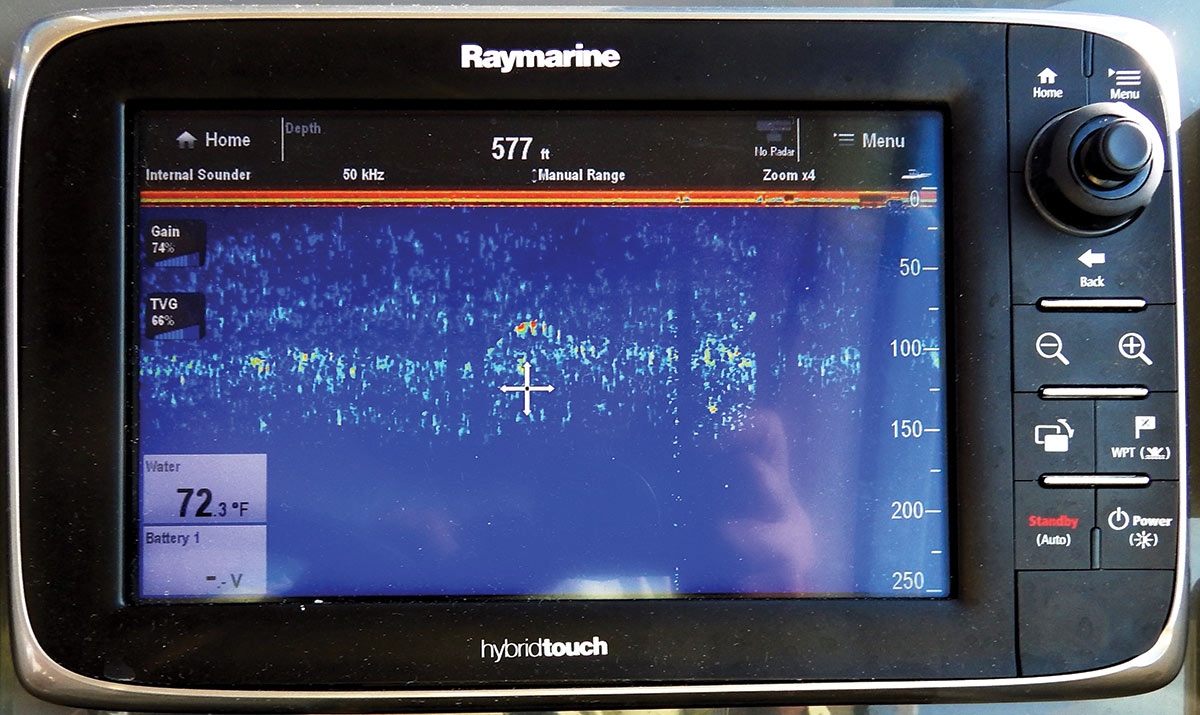
If the draggers are not around on your day trip to the edge, pot-hopping for dorado; trolling the edge, lobster pots or the temp breaks; and/or deep-dropping for tilefish are all viable options. The most important management element of your trip is to watch your time and to keep things moving along. Be observant of your local conditions and be sure to listen in to VHF chatter. It’s always good to have buddies calling each other in to a hot bite. But if one technique is not working, move on to the next element and try to catch some fish. You probably left in the dark to get out there and will most certainly get back in the dark, but watch the weather window and leave yourself enough time to transit back to home port in reasonable light conditions. If the wind and seas have picked up since the morning hours, it will take more time and more fuel to get back to home port, so plan accordingly.
Canyon Overnighters
Canyon overnighters in September and October are my favorite way to fly to the edge, with the primary reason being the increased amount of fishing time for the fuel spent and the time travelled. Depending on the size and speed of your vessel, it’s going to take 6 to 8 hours to get to and from the edge. If you are day tripping, you will be lucky to get 7 or 8 hours of fishing time. When you are overnighting it in a favorable weather window, that fishing time can increase exponentially to 20 to 25 hours or more. And the fuel bill is not much different.
The increase in fishing time gives you a much broader planning window to make multiple things happen. Proven techniques include pot hopping for dorado, deep drop tile fishing, deepwater wreck fishing, trolling, chunking, drifting for large makos and swordfish and jigging. Have a plan, be flexible with it, have a backup plan and stick with the components that are working and abandon those that are not. It’s important to limit the amount of rookies you take on these trips and to make sure that everyone onboard is gung-ho to work hard to make things happen. You need a competent crew to do the little things like to constantly check baits, stay alert on watch at 3 a.m., cut up many flats of chunk baits, watch the echo sounder for action down below and to angle and land large pelagic gamefish. Too many first-timers can get overwhelmed by moments of madness, so if you must, take one or two newbies onboard to train them, but make sure that you have enough vets with you to handle the chores. Have all of the requisite safety gear and emergency equipment onboard, as well as plenty of spare parts for critical tackle. The species that you will encounter out on the edge during September and October are the most prolific during this time period and include white and blue marlin, swordfish, wahoo, bluefin, yellowfin, albacore and big eye tuna, dorado and more. Be sure to bring enough ice and take only what you can chill effectively and release the rest.
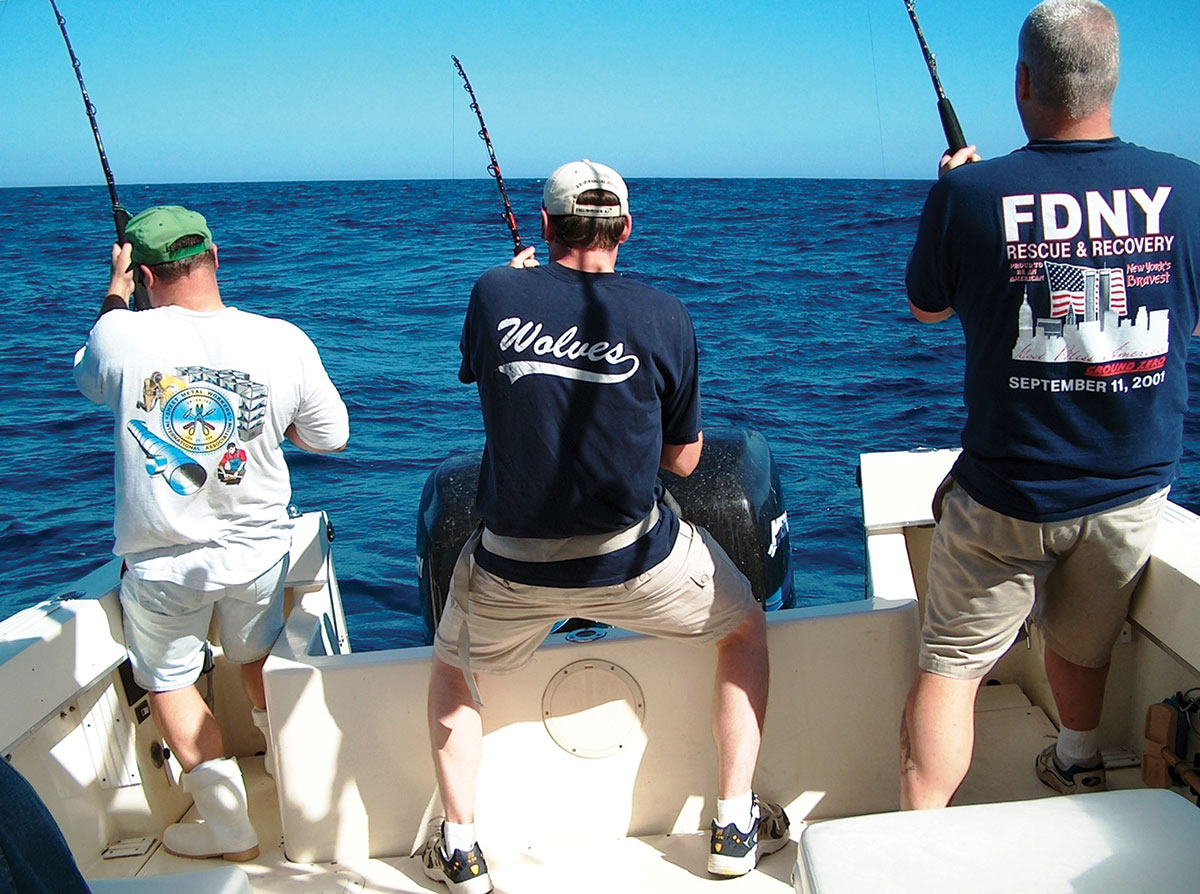
Some Final Thoughts
The bottom line for the fall near offshore and canyon fishing enthusiasts is that the weather can giveth and the weather can taketh it all away. It is unwise to fight a force of nature that you just can’t beat. Keep a watchful eye on the forecasts and plan your trips around the weather with the operative word “flexibility” the key ingredient. If you can get a few days off during the week with a cooperative weather window, be ready to jump at a moment’s notice and head offshore. Getting favorable conditions on a weekend doesn’t always work out.
The fall fishery gives you only two or three good days in a week to head offshore and you need to leverage these opportunities when they present themselves, so be advised and plan accordingly. It’s nice to end the 2018 fishing season with a bang and have a few good lasting memories, photos and videos to carry you through the cold winter months, plus some great tuna and mako steaks for the freezer. But no trip is worth your life, so be safe and watch that weather window, and when the time is right, go out there and make it happen.
